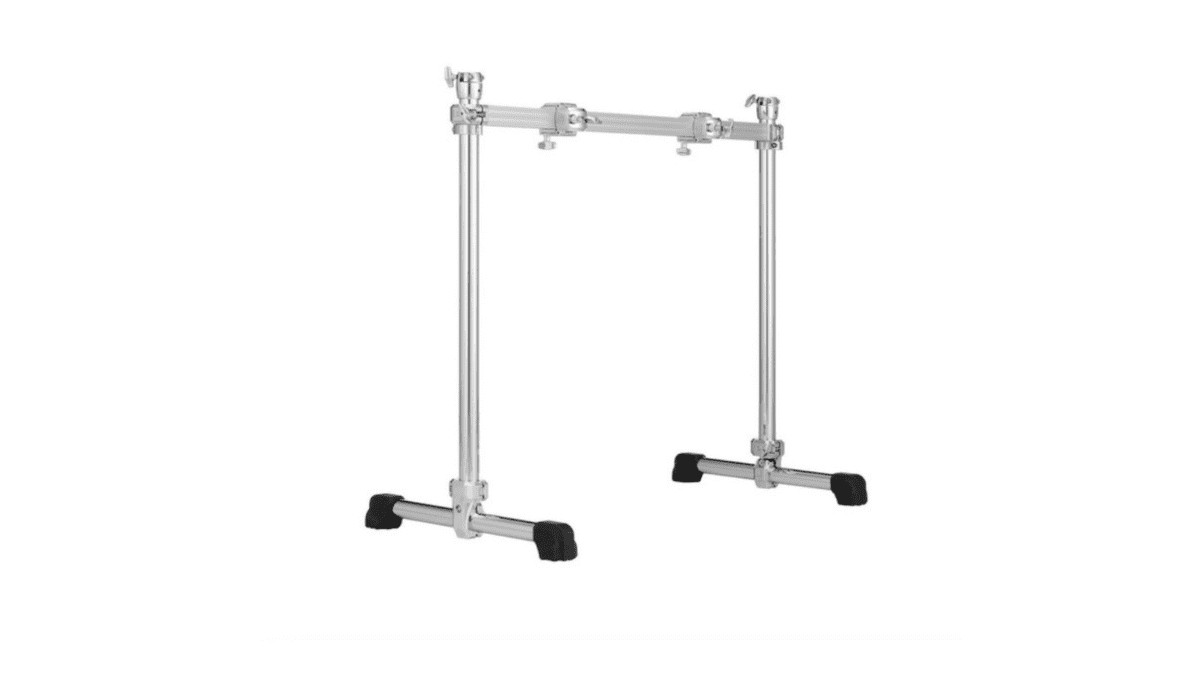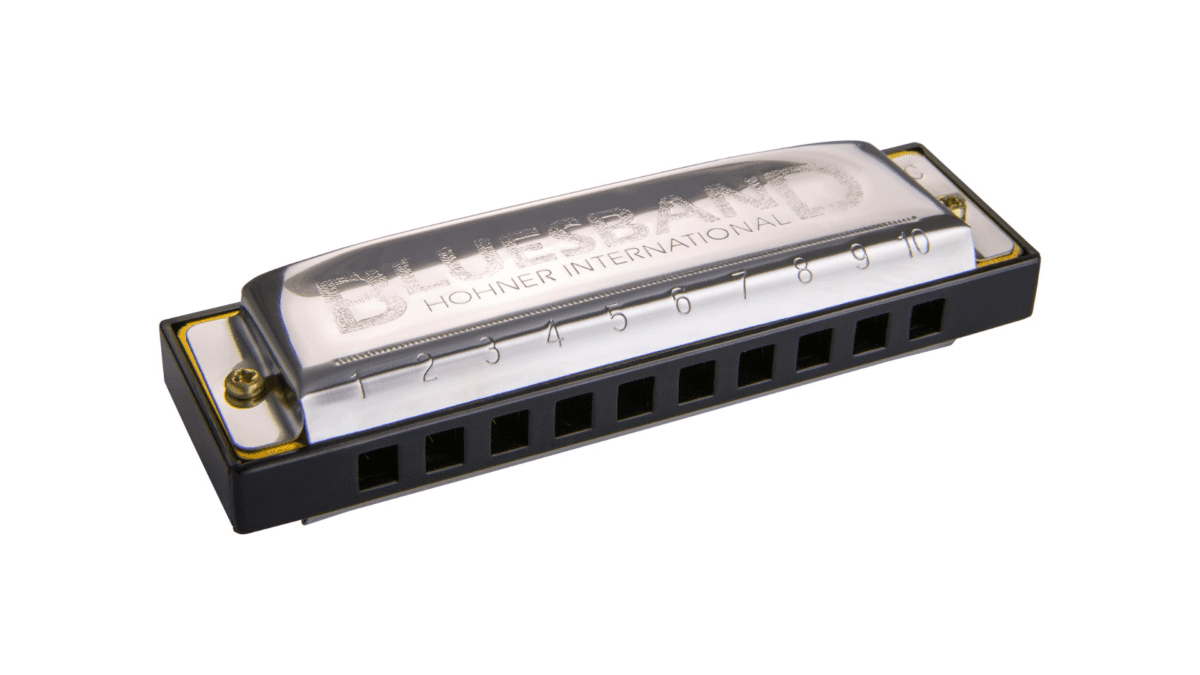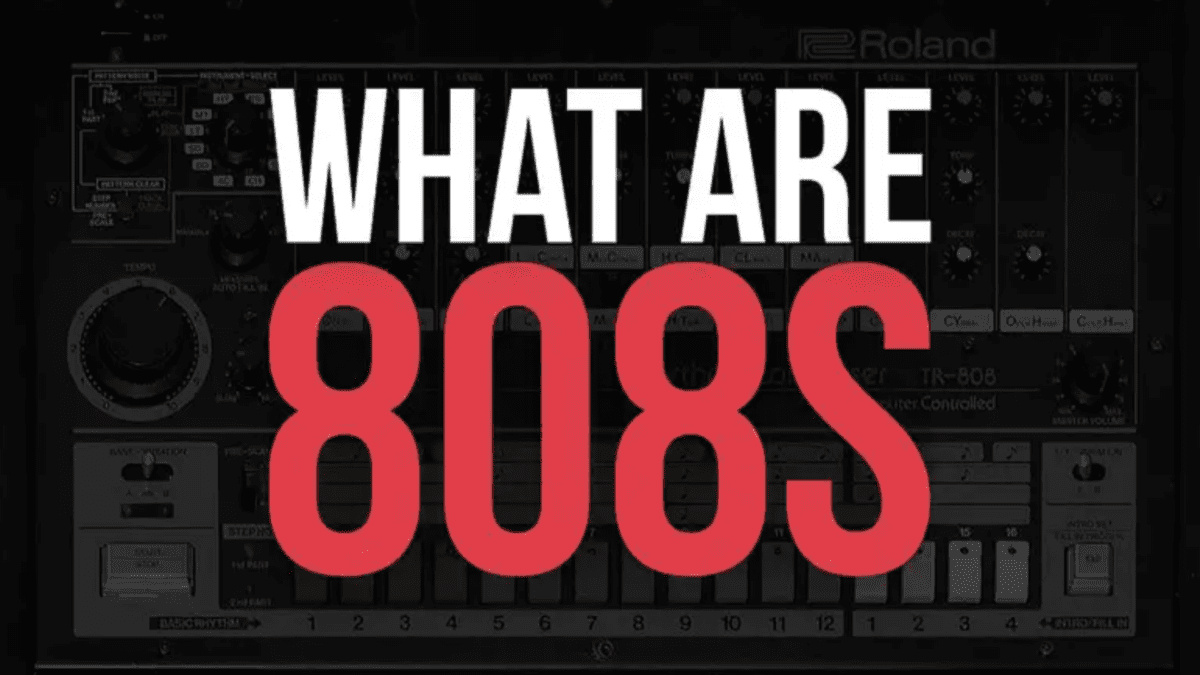Percussion instruments are a family of instruments, the largest in the orchestra. They are a vital part of any musical ensemble. There are many different types of percussion instruments from around the world, used in a variety of different ways.
This definitive guide will talk you through what instruments are percussion, a brief history of their development and describe a few key examples of percussion instruments you might encounter.
What are Percussion Instruments?
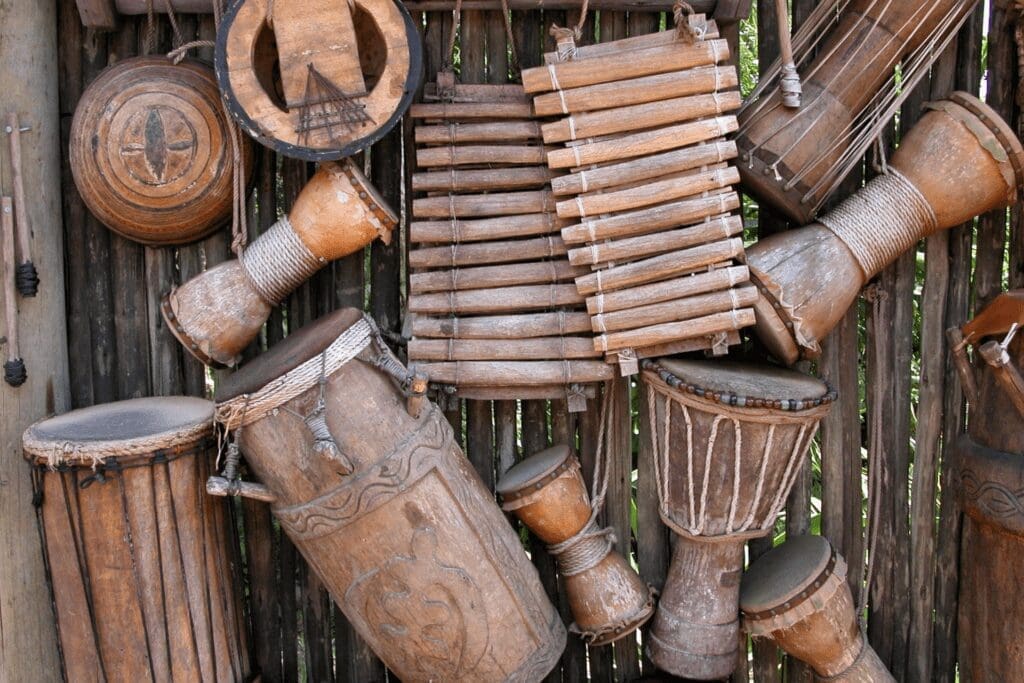
When we speak about percussion meaning instruments, we are talking about any instrument that you hit, shake or scrape. The word percussion comes from the Latin ‘percussionem’ which means to strike or blow. The word ‘repercussion’ has the same root!
Many percussion instruments are used for rhythmic purposes, for example, drums, which do not really have a melodic element. Others can hold a tune, such as a xylophone or timpani.
Membranophone and Idiophone Percussion Instruments
There are 2 main types of percussion instruments, membranophone and idiophone. For membranophones, percussion drums are the obvious example and provide a helpful way to remember the categorisation.
Membranophone comes from ‘membrane’ which means thin skin or tissue like the skin stretched over a drum. Therefore instruments in this family are those that produce sound through a stretched vibrating membrane.
The other main category of percussion instruments is idiophone instruments. These instruments make sound by the vibrations of the instrument as a whole, so without the use of skin (like percussion drumming), airflow or strings. For example, cymbals are idiophone percussion instruments.
Did you know that the piano can be counted as a percussion instrument because you hit the keys to play it? There is some controversy as to whether it is percussion or string; you hit the keys, but the sound is produced by hammers striking strings.
The standard set-up of a percussion ensemble includes timpani, xylophone, cymbals, triangle, snare drum, bass drum, tambourine, maracas, gongs, chimes, celesta, and piano.
A Brief History of Percussion
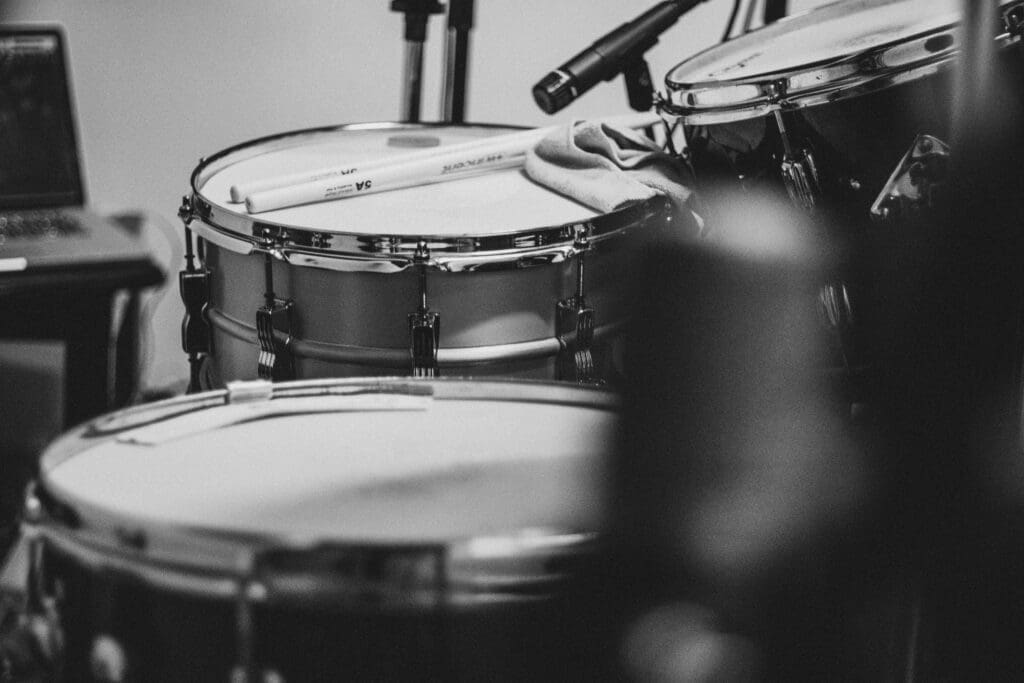
Percussion instruments are believed to be one of the oldest types of instruments, aside from the human voice. It’s hard to trace the history of these instruments because the category is so large and percussion music is so varied; whenever humans first started hitting, scraping and shaking objects, percussion was born!
In Belgium, idiophones made from mammoth bones have been found, believed to date back to 70,000 BC.
It makes sense that with drums percussion was created. There is evidence of drums being played as early as 5500 BC in China. They were also around in the Mesopotamian, Egyptian, Greek and Roman empires. In fact, drums have been present in nearly all cultures and often hold strong spiritual or cultural significance.
Drums came to Europe from the Middle East. For example, timpanis, which are used in European classical music, can be traced back to similar instruments used in Egyptian and Turkish cultures.
The drum kit that is used in popular music today has its roots in 20th century USA, specifically in the New Orleans jazz scene. Musicians started to assemble various classical drums to create a ‘kit’ that made all the sounds they needed reachable.
More recently, electric drum kits have been developed, which create a digital sound, often played through headphones. A standard drum kit set-up usually includes 2 tom-toms, a floor tom, a bass drum and a snare. However, you can always add more drum and percussion accessories to your kit.
Types of Percussion Instruments
So what instruments are percussion? This list will take you through some of the most important percussion instruments, sorted according to the region of the world they come from / are most associated with:
European and US Percussion
Drum Kit
Snare Drum

A snare drum is the main drum in a drum kit. It has a sharp and loud sound, described as staccato. It is generally positioned between your legs.
Bass drum
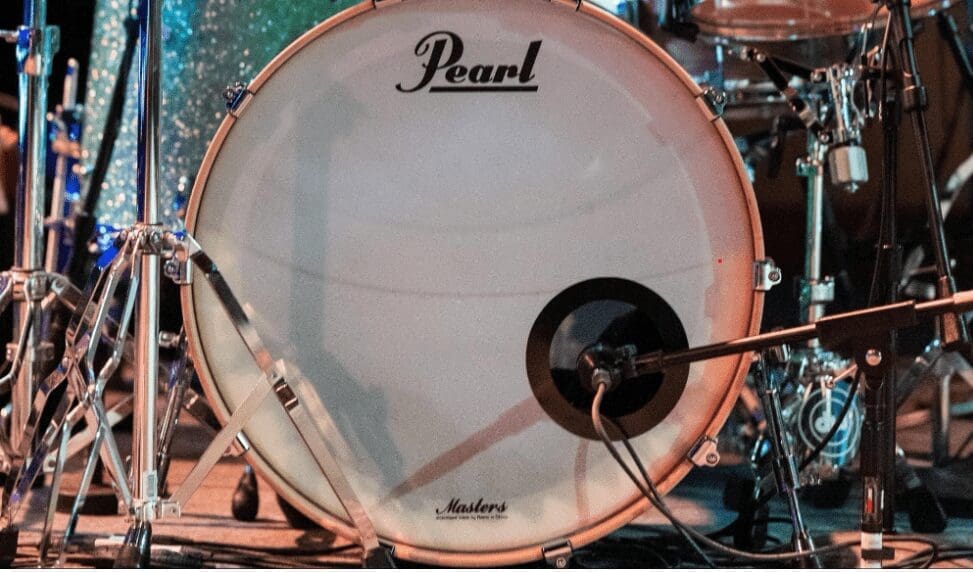
The bass drum also appears in a drum kit. It creates a low, deep sound, and is usually hit by a foot pedal. It is also called a kick drum.
Tom Drum

Tom drum, also known as a tom-tom, is a cylindrical drum with no snares. They range between 6-20 cm in diameter. They also appear in a drum kit. If you are looking to buy a drum set, a Percussion Plus drum set is a good place to start – they are one of the leading suppliers of percussion in the UK.
Cymbals
These round metal plates are an important part of a drum kit. They are struck to produce a loud crashing sound. Cymbals are an ancient instrument; they are referenced in the Bible and in texts from the 7th century BC, Ancient Greece and Ancient Rome.
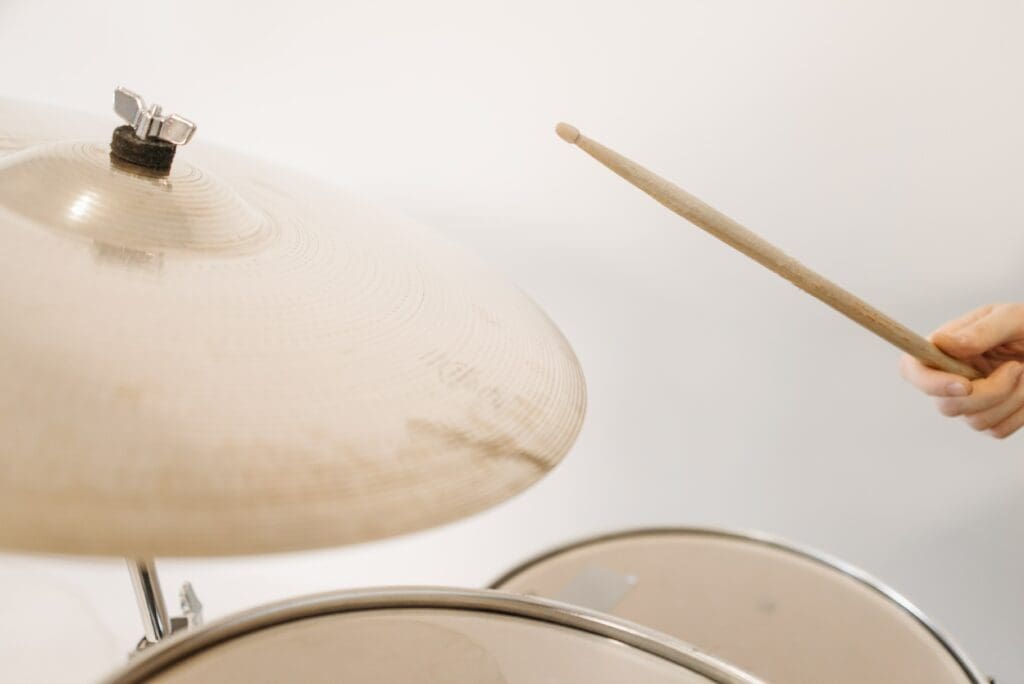
They are round with a slightly coned shape, with a raised bit in the middle called the bell. The bell produces a high-pitched sound, while the rest of the plate, called the bow, produces a loud, crashing noise.
Some cymbals are played by hitting two such metal plates together, some are struck with a mallet. The German brand Meinl is one of the most famous percussion makers in the world and specialises in cymbals.
Triangle
A primary school favourite, the triangle is made from a piece of metal, shaped into a triangle and struck with a metal stick to produce a ringing sound. While you may associate them with school assemblies, they actually have a very long history!
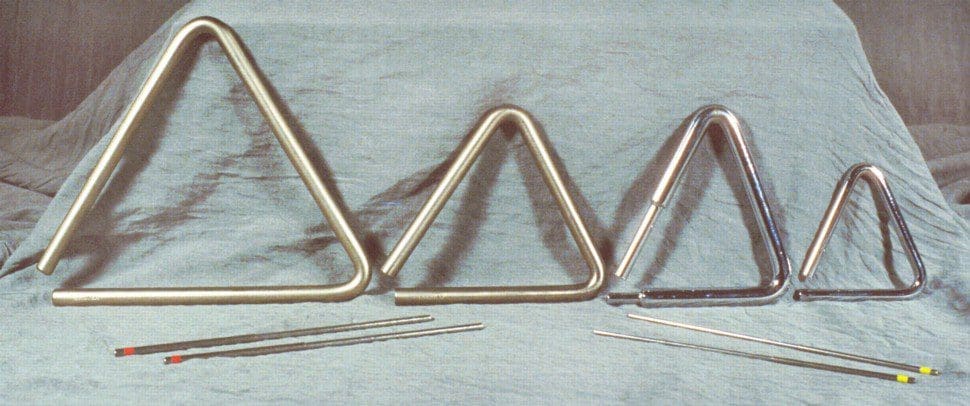
The first evidence of triangles being used as an instrument is in iconography from 9th century Bavaria. However, it is thought to have descended from a much older Egyptian instrument called a sistrum. Either way, since the 14th century it is a common feature of Western Christian iconography.
It is used in classical music to this day and can actually be quite challenging to play. The stereotypical triangle part is a single ding at the end of the piece, however, it is also employed to play complex rhythms and rolls in orchestral pieces.
Bodhrán
The bodhrán is an Irish drum that is thought to date back to Celtic times. It is similar in shape to a tambourine and is played by being struck with the back of your hand.
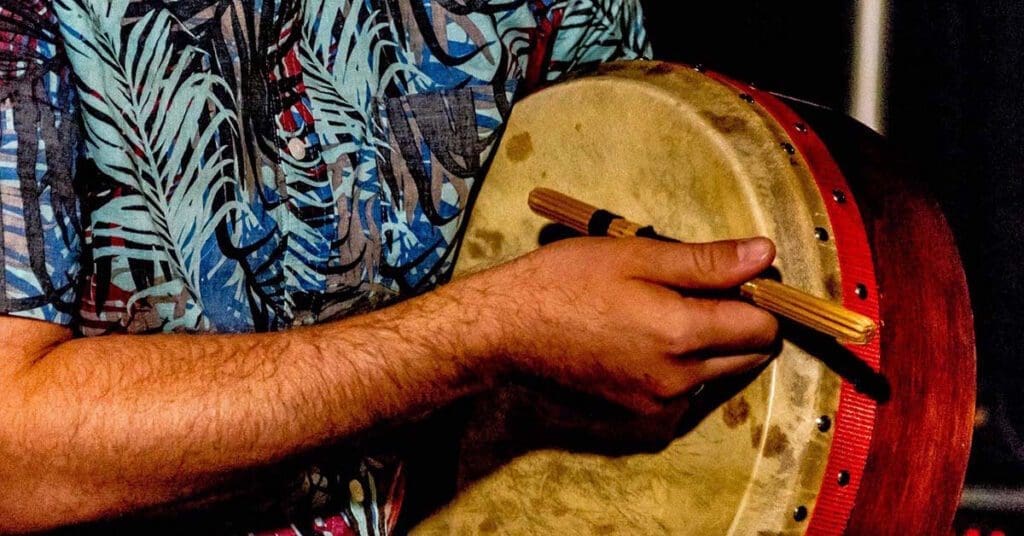
There are theories that the earliest forms of the bodhrán were in fact sieves used for winnowing grain or skin trays used for carrying peat – so not instruments at all!
The bodhrán experienced a large surge in popularity during the folk music revival of the 1960s. It is now played across the Celtic world, from the British Isles, to Galicia.
Glockenspiel
A glockenspiel is similar to a xylophone, except with metal bars instead of wooden ones. They were formalised as a percussion instruments in the 17th century.
Large orchestral glockenspiels can contain up to three octaves and have sustain pedals much like a piano.
Smaller glockenspiels can be suspended from the shoulders and neck and played as a portable instrument in parades and carnivals. Vertical versions of the glockenspiel are called bell lyres.
Vibraphone
The vibraphone is again similar to the glockenspiel and xylophone in that it is made of tuned bars resembling those of a piano, which are struck with mallets. It was invented in the early 20th century
The main distinguishing feature of the vibraphone is the fact that below each bar is a resonator tube which produces a tremolo or vibrato effect.
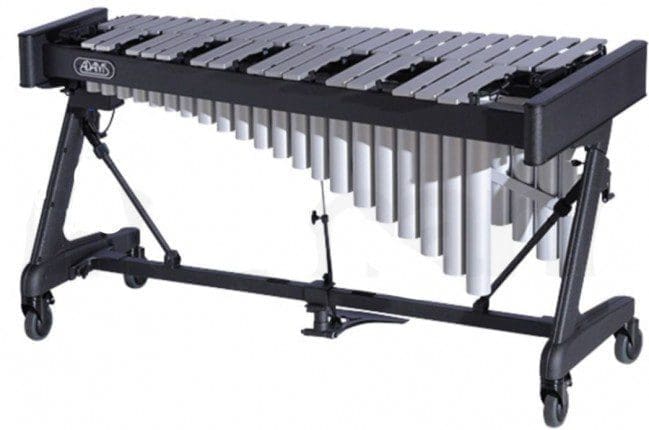
The distinctive sound of the vibraphone is very popular in jazz music. It is also used in orchestras, marching bands and concert bands.
Castanets
Castanets are most famously used in Spanish music, however, they are also popular in Portuguese, Moorish, Swiss, Italian and Sephardic Jewish music. They are made from a pair of concave shells which are held in the palm of the hand and hit together. The sound produced is rapid clicking and rattling.

Handheld castanets are often used by dancers. For example, they are a key part of flamenco dancing in Southern Spain. In Andalusia they are known as ‘palillos’, meaning little sticks.
Sometimes Castanets can also be mounted on a wooden board for use in an orchestral setting. This makes them easier to play but alters the sound considerably.
Percussion Bells
Bells are idiophone instruments that are used for a variety of purposes. You probably are familiar with bells being used as an alarm, but they can also be played tunefully as an instrument, like how they are used by churches!
Handbells, as the name would suggest, are small handheld bells. Each bell plays only one note, so in handbell choirs, each player is responsible for playing only the note their bell (or bells) represents. You can buy handheld percussion bell kits online.
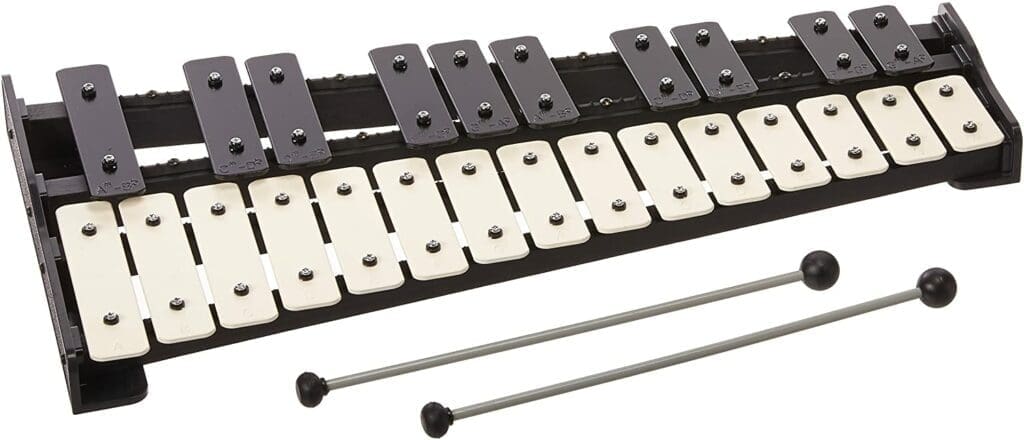
Church bells are played by bell ringers pulling long ropes which swing the bells at the top of the church tower. Both forms of bell playing require a lot of coordination between players!
Cowbells are another kind of bell. These were originally used by shepherds to keep track of cows, but have been adapted as musical instruments. Standard cowbells are rung like normal bells, but clapperless cowbells (which are popular in Latin American music) are struck by a mallet.
Chimes
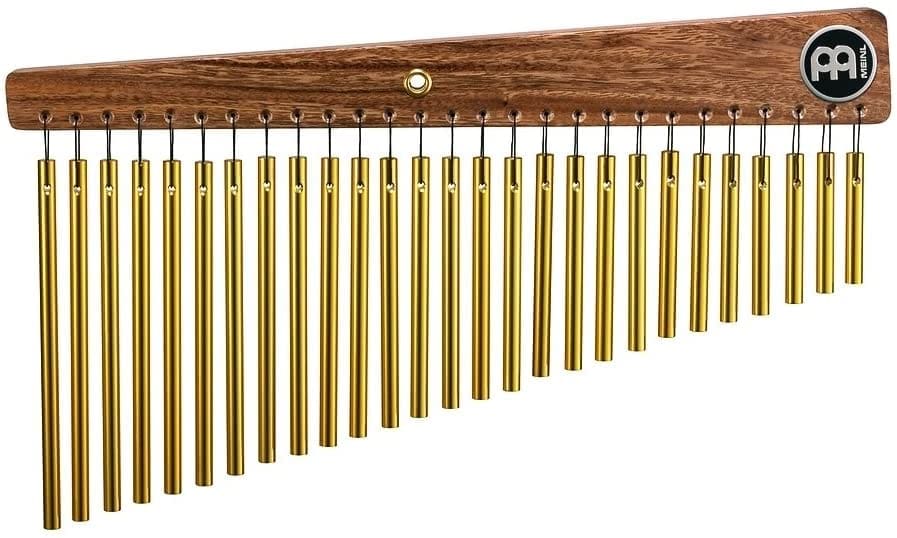
Unlike wind chimes percussion chimes can be played deliberately to produce a melody. However, they are usually used in orchestras to add colour or special effects to a sound. They are also known as tubular bells, thanks to their long tube shape.
They are played by being hit with a mallet or similar.
Latin America and the Caribbean Percussion
Maracas
The classic percussion shaker instrument, maracas are also known as chac-chacs. They are one of the most famous Latin percussion instruments. Their origins lie with various indigenous people in South and North America, most famously the Tupinamba and Guarani people of Brazil.

In the Tupinamba culture, they have holy status and are used to heal the sick. They were traditionally made from gourds filled with pebbles which were shaken to produce a rattling sound.
They are a prominent feature of much contemporary Latin American music, particularly Cuban music.
Bongos
Bongos are an Afro-Caribbean drum set, consisting of two drums, one slightly larger than the other, connected by a wooden bridge. They are placed between your knees and played by hitting the edge of the skin with your palms and fingers.
Bongos are an important part of the rhythm section of son cubano and salsa music and became hugely popular with the rise of Cuban music in the 20th century.
They are thought to have developed from African drums brought to the Caribbean by enslaved people.
Steel Pan Drum
Steel pan drums are from Trinidad and Tobago. These drums are made from 55-gallon industrial drums used for shipping cargo. They are concave, with ovals hammered into the drum surface to produce different notes – the larger the oval the lower the tone. They are played with mallets.
The origins of the steel pan drum can be traced back to West African talking drums. These were adapted over the centuries by enslaved people in the Caribbean. The steel pan drum as it exists today was invented in the 20th century, as Trinidadians improvised drums out of materials that were available to them, such as frying pans, dustbin lids and oil drums.
Congas
Conga drums are another Cuban instrument. They are tall and thin and come in 3 different sizes and pitches. These drums gave the name to the popular genre ‘conga’, in which they are the main instrument. They are often played in conjunction with bongos.

Conga drums are thought to have originated in the 19th century, as an Afro-Carribean version of the Makuta drum used by the Bantu people in Africa.
Conga drums are used across Latin America, not only in Cuban music. Different styles/genres use different set rhythms to be played on congas.
Asian Percussion
Gong
Gongs are percussion instruments from Southeast Asia. They are made from a flat circular metal disc, similar in appearance to a cymbal, which is usually suspended from a frame and struck with a mallet. They vary enormously in size.
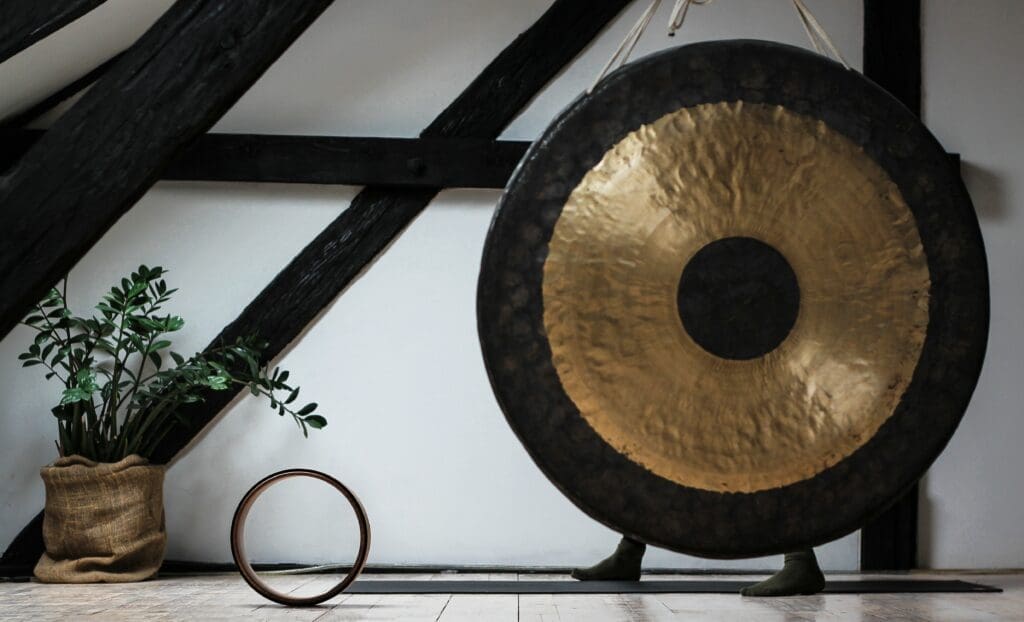
There are many different types of gongs, with varying purposes. For example, an opera gong is a pair of gongs used to announce different characters and moments of drama. A nipple gong has a raised ‘nipple’ in the centre which alters the sound it produces, depending where you strike it.
Gongs are frequently used in religious settings across Asia. In Europe, the tam-tam gong has been part of classical orchestras since the late 1700s.
Mridangam
The Mridangam is a drum of Southeast Asian origin. The Mridangam and other related drums have been played for centuries. It is two-sided and usually made of hollowed-out jackfruit wood, with goatskin stretched across each end. One end is usually smaller in diameter than the other so that the drum can make both bass and treble sounds depending on which end is struck.
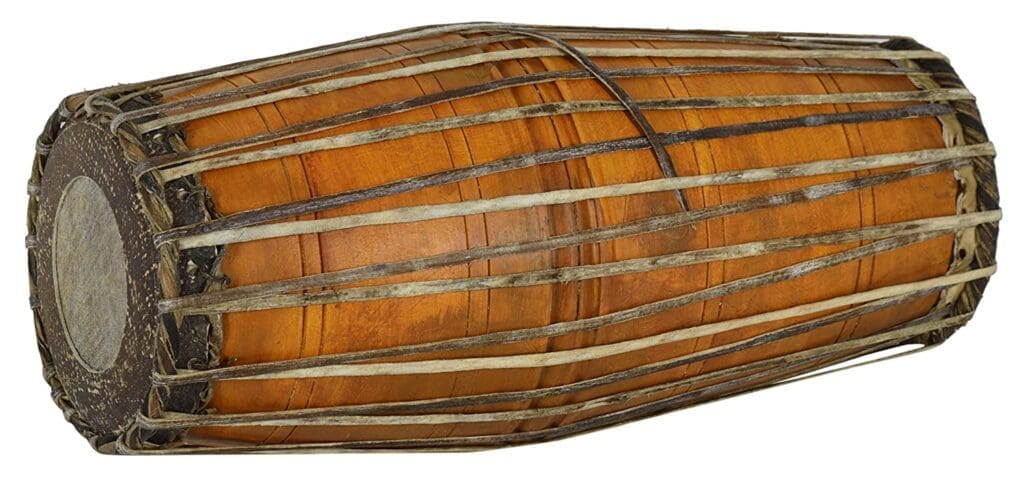
Playing the mridangam requires a very specific posture. The player sits with the left leg bent up and the right leg slightly extended. The drum lies on the right leg and leans against the left.
It is very important to practice good posture if you are a mridangam player; many players develop posture-related health issues, as severe as scoliosis, from consistent playing.
Tablas
A tabla is a pair of drums from India. They are popular in folk music performances across India, Nepal, Bangladesh, Sri Lanka and Afghanistan.
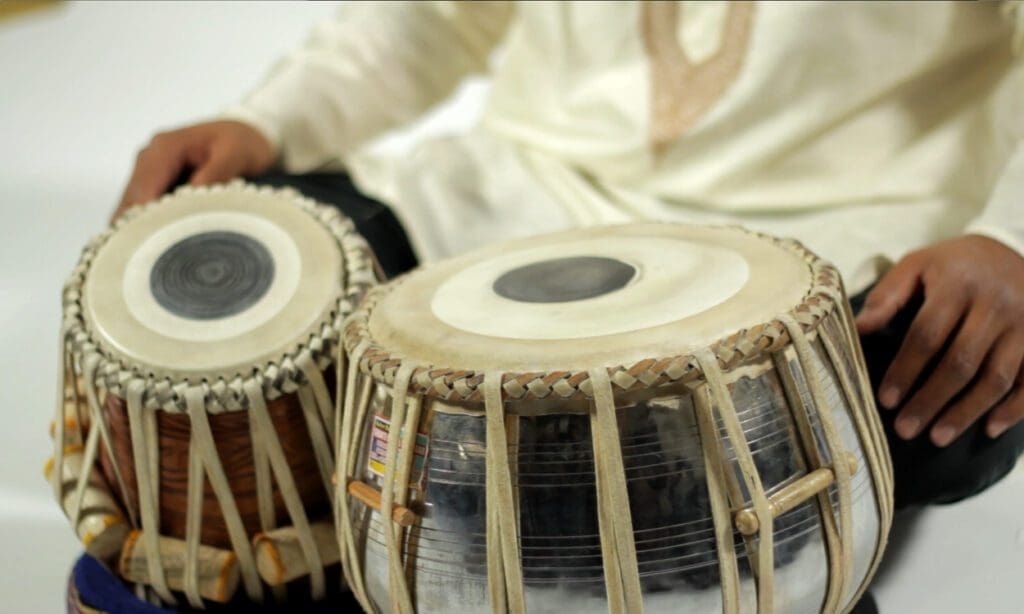
Its origins are contested. Some believe that it is indigenous to the Indian subcontinent, others believe it was brought by Muslim and Mughal conquerors, as its name has been linked to the Arabic word for drum which is ‘tabl’.
The earliest definitive pictorial evidence of the tabla, as we know it today, comes from the 1800s.
Much like the bongos, a tabla has a larger drum and a smaller drum. The drums can be tuned to hit a specific note which complements the melody. This is achieved by sliding small cylindrical blocks beneath the straps which come down the sides of the drum. When you adjust these blocks, the tension of the skin is altered, thus altering the pitch when you strike it.
Xylophone
A xylophone consists of wooden bars laid out like piano keys which are struck with wooden mallets to produce different notes. They are used in orchestras, but smaller versions are also popular as children’s toys as a means to teach music.

The origins of the xylophone are hotly contested; some claim it came from Southeast Asia, and then travelled to Africa around 500 AD. Others claim it has an independent origin in Africa and that African xylophones are distinct from Asian xylophones.
In Europe, it is associated with folk traditions of central Europe. The earliest evidence of the xylophone in Europe is in 14th-century Slovakia.
Africa and the Middle East Percussion
Djembe
A djembe is a West African drum. It is made of wood with a rawhide skin stretched over the top. They are usually about 60cm tall and stand alone. To play them, you place the drum between your knees, slightly tilted away from you and hit the middle and edges.
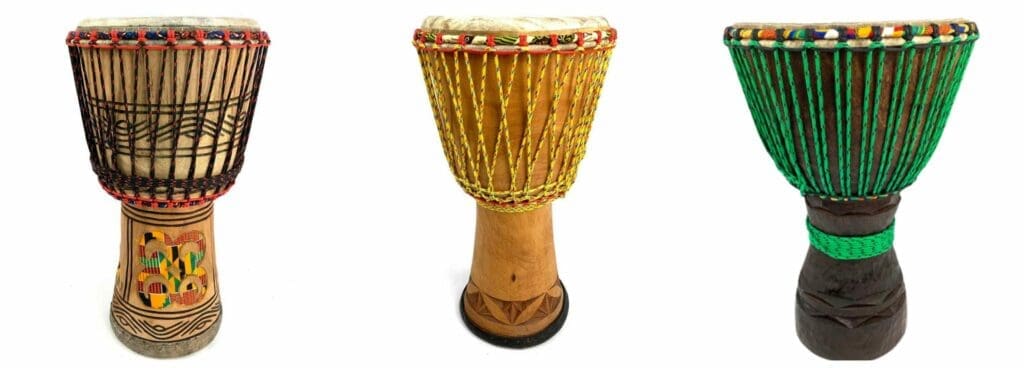
The djembe was created by the Malinke people and is thought to have spread through West Africa during the Mali Empire in around 1200 AD. Traditionally, only men play the djembe. This is mostly still the case in Africa today.
There are 3 basic sounds that djembe players use (though the drum is capable of producing up to 25 different sounds): bass, tone and slap. The bass sound is created by hitting the drum in the middle of the skin. The tone sound is created by hitting the edges with the edge of your palm and most of your fingers, whereas a slap uses only the fingertips and edge of your palm.
Tambourine
A tambourine can be either a membranophone or an idiophone. Usually, it is an idiophone, consisting of a circular piece of wood with little jingles, known as ‘zills’ set in it. It is shaken and hit against your palm to produce sound and rhythm. Sometimes skin is stretched across it, which can be struck – this makes it a membranophone too!
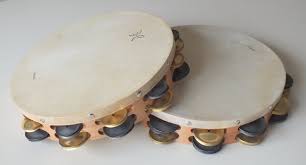
Tambourines have been used across the world for centuries, but they are thought to have travelled to Europe from North Africa and the Middle East in the 13th century, brought by returning crusaders.
There are many instruments that are related to the tambourine, for example, the Ancient Egyptian ‘tof’, the Ukrainian folk instrument the ‘buben’ and the Brazilian ‘pandeiro’.
Timpani
Timpani – or kettle drums – are tuned drums, meaning they can produce different notes. This is achieved by adjusting the tension of the membrane. They are usually played in a set of two to four, each tuned to a different pitch. They are very expensive as a set takes up to two years to make. You can expect to pay £12,000-£14,000 for a timpani set.
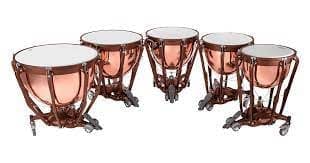
Closing Thoughts On Percussion Instruments
And there you have it! A definitive guide to percussion instruments from all over the world.
Percussion instruments are an integral part of the music world, and they have been used in all kinds of music for centuries. From the drums of the African continent to the tambourines of Latin America, percussion instruments have a long and varied history.
Whether you are a musician, a composer, or just a fan of music, percussion instruments are sure to add an exciting and unique element to your music. With so many different types of percussion instruments to choose from, there is sure to be something for everyone. So why not explore the world of percussion and see what kind of music you can create?






